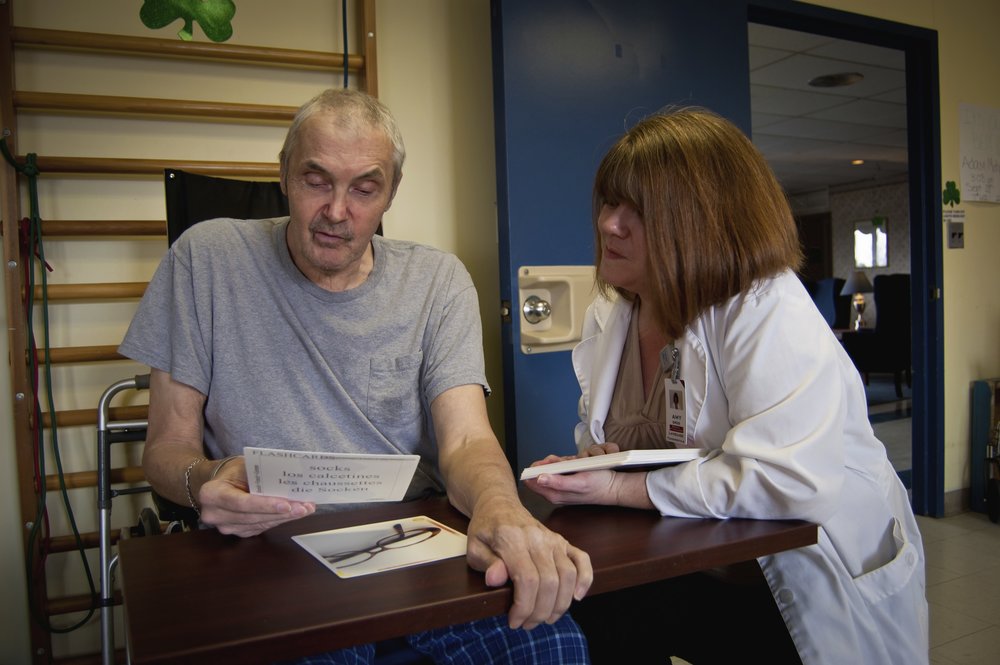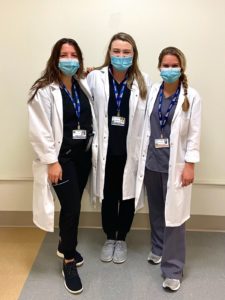The characteristics of Parkinson’s disease differ among patients. Some of the most common/noticeable symptoms include:
- Tremors
- Shuffling gait (short steps)
- Stiffness/increased rigidity and slowing of movement
- Involuntary movements
Because Speech-language pathologists are specially trained, good ones are on the lookout for other symptoms such as:
- Difficulty initiating the swallow reflex
- Reduced tongue movement & reduced mouth opening
- Hypo-kinetic dysarthria (unintelligibility caused decreased muscle movement)- this can present to the listener as “slurred” speech and/or mumbling
- Impaired cognition, such as decreased safety awareness
- Short-term memory deficits
Language Fundamentals Regional Manager, Tara Tyler, CCC-SLP recently shared the story of a short-term rehab patient with Parkinson’s who was recovering from a recent fall. “Before the fall, the patient was living at home and was otherwise high functioning. He presented with tremors & involuntary jaw movements, mild dysarthria, and impaired cognition. He became increasingly unintelligible when fatigued.”
Tyler implemented a variety of strategies, based upon her training with the Lee Silverman Voice Therapy program. Strategies implemented to improve overall communication skills included taking a full breath prior to speaking to improve breath support and volume of speech and over articulation to combat the perception of “slurred” speech. Tyler and her patient also worked together to improve short-term memory skills and improve safety awareness in order to ensure a safe discharge home.
Lorna D’Sa, CCC-SLP of Language Fundamentals shared the account of a patient with a history of mental illness that developed Parkinsonism, which in this case was brought on by antipsychotic use. The patient developed a severe case of dysphagia, including delayed swallow initiation. There was significant residue in the valleculae- spaces food and fluid can collect in around the opening to the trachea. Further complicating the patient’s medical status was the development of Covid-19.
After the onset of the virus, an objective swallowing test – MBSS- was completed which showed silent penetration and aspiration with various food and fluid consistencies. “Because the patient was acutely ill with significant swallow issues, my patient was rendered NPO. Nutrition was administered via tube feedings. In order to rehabilitate his swallow, we practiced strategies, such as double swallow and effortful swallow, first with dry swallows and advancing to ice chips.
Thorough oral care was also performed every session. Exercises that we utilized daily included the Shaker, Chin Tuck Against Resistance (CTAR), Mendelhson, Masako, and effortful swallows.” After a more recent Modified Barium Swallow Study (MBSS), the patient returned to a P.O. diet. D’Sa remains optimistic, as “there is a strong prognosis for a return to a regular diet.”
When asked about what it is like to work with patients with Parkinson’s disease, Tyler and D’Sa echoed one another’s thoughts. “Patients with Parkinson’s disease are more than willing to participate in therapy. Once they come to terms with having a degenerative disease, they are strongly motivated to reduce the effects of their symptoms.”
With the increasing incidence of Parkinson’s Disease, raising awareness is important. Skilled Nursing Facilities need the resources and expertise in order to help the patients maintain their quality of life.



